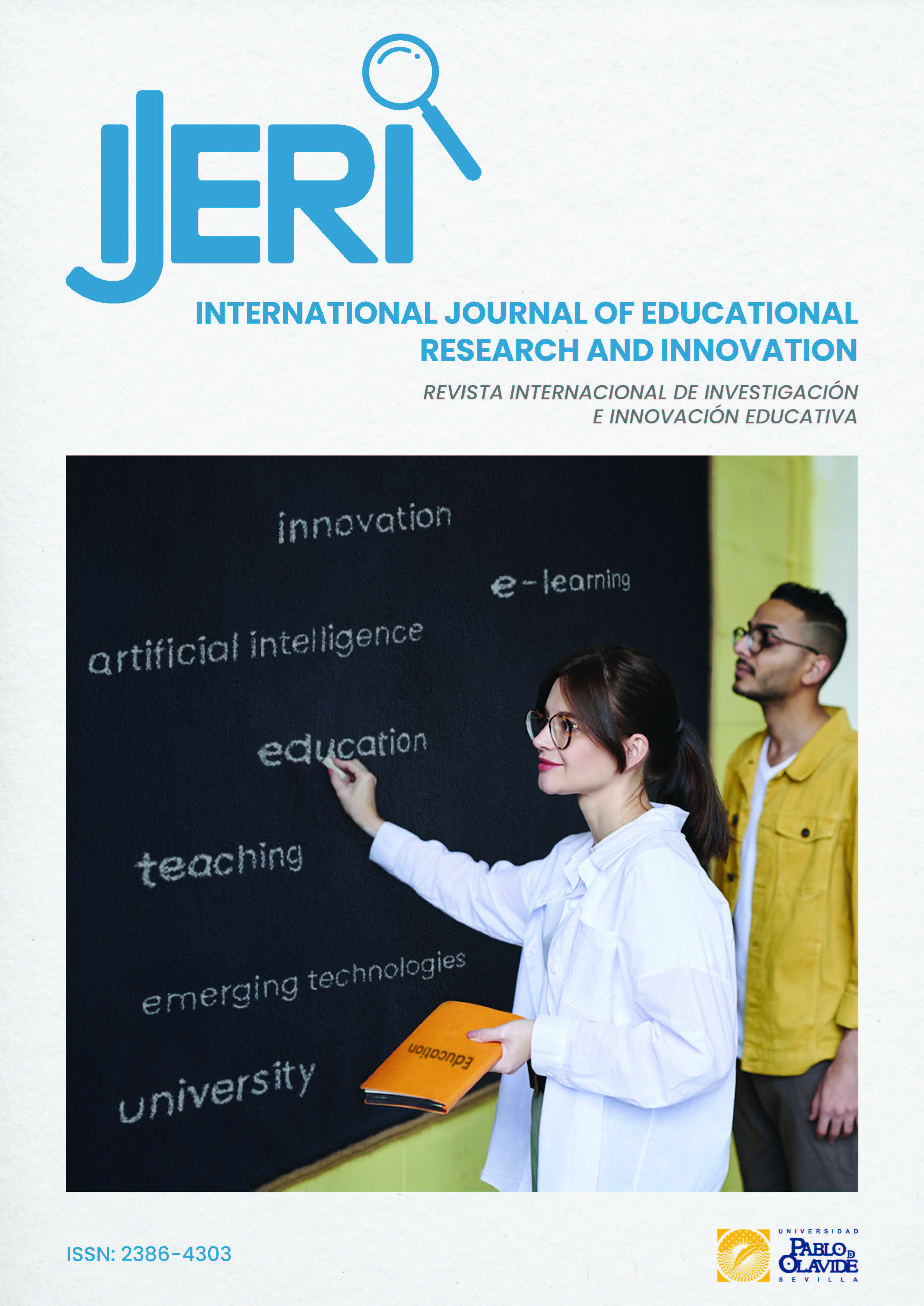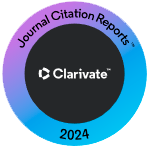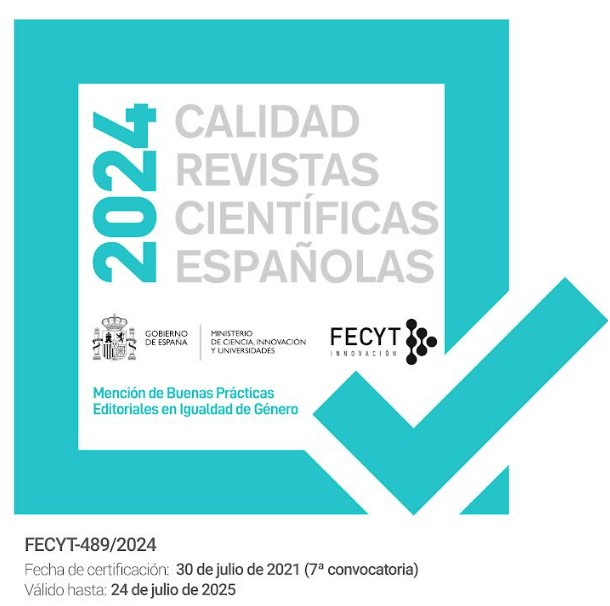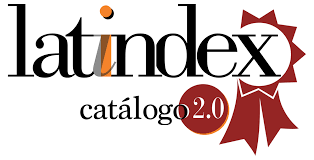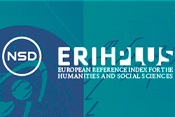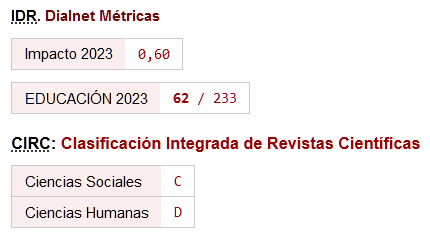K pasa bro? Code mixing and multimodal elements in WhatsApp communication in vulnerable and non-vulnerable contexts
DOI:
https://doi.org/10.46661/ijeri.10650Keywords:
Textisms, WhatsApp, Vulnerable contexts, ANSTNs, ASTNsAbstract
This study investigates differences and similarities in the use of English words and multimodal elements in the digital texts of students from vulnerable and non-vulnerable contexts. In addition, differences in the use of textisms between males and females are analysed. For this purpose, a case study was carried out that compared the writing of students in schools areas with social transformation needs (ASTNs) and in schools in areas without social transformation needs (ANSTNs). The sample consisted of 126 students in the third and fourth year of compulsory secondary education, aged 14, 15 and 16. The results show a differentiated behaviour in both contexts. Furthermore, it is observed that, in line with previous literature, females use more textisms in general, as well as lexical-semantic items, although this conclusion is only validated for ANSTNs. These findings reaffirm the need not to generalise adolescents' digital writing, but to consider their specific context, as there are large differences depending on the background.
Downloads
References
Adams, A., & Miles, J. (2023). Examining textism convergence in mediated interactions. Language Sciences, 99, 1-14. https://doi.org/10.1016/j.langsci.2023.101568
Bernicot, J., Goumi, A., Bert-Erboul, A., & Volckaert-Legrier, O. (2014). How do skilled and less-skilled spellers write text messages? A longitudinal study. Journal of Computer Assisted Learning, 30(6), 559-576. https://doi.org/https://doi.org/10.1111/jcal.12064
Bushnell, C., Kemp, N., & Martin, F. H. (2011). Text-messaging practices and links to general spelling skill: A study of Australian children. Australian Journal of Educational and Developmental Psychology, 11, 27-38.
Cantamutto, L., & Vela Delfa, C. (2019). Emojis frecuentes en las interacciones por whatsapp. Círculo de Lingüística Aplicada a La Comunicación, 77, 171-186. https://doi.org/10.5209/CLAC.63282
Cantero, F. J., & De Arriba, C. (1996). El cambio de código: contexto, tipos y funciones. In J. L. Otal, I. Fortanet, & V. Codina (Eds.), Estudios de Lingüística Aplicada (pp. 587–596). Universitat Jaume I.
Chalak, A. (2018). Gender differences in Iranian EFL learners’ textese and digitalk. International Journal of Language Studies, 12(3), 55-72.
De Jonge, S., & Kemp, N. (2012). Text-message abbreviations and language skills in high school and university students. Journal of Research in Reading, 35(1), 49-68. https://doi.org/10.1111/j.1467-9817.2010.01466.x
Drouin, M., & Driver, B. (2014). Texting, textese and literacy abilities: a naturalistic study. Journal of Research in Reading, 37(3), 250-267. https://doi.org/10.1111/j.1467-9817.2012.01532.x
Fernández-Juliá, O., & Gómez-Camacho, A. (2024). Digital norm and spelling competence of adolescents in vulnerable contexts:a case study. Texto Livre, 17(e47493), 1-13. https://doi.org/10.1590/1983-3652.2024.47493
Forbes, F.-J. M., & Buchanan, E. M. (2018). “Textisms”: The Comfort of the Recipient. Psychology of Popular Media Culture, 8(4), 358-364. https://doi.org/10.1037/ppm0000194
Forteza Matínez, A., de Casas Moreno, P., & Vizcaíno Verdú, A. (2020). The level of digital literacy in English teacher in Primary Education. IJERI: International Journal of Educational Research and Innovation, (14), 76–90. https://doi.org/10.46661/ijeri.4038
Giammatteo, M., & Parini, A. (2018). El español en la red. Editorial Iberoamericana/ Vervuert. https://doi.org/10.31819/9783954877386
Giraldo-Giraldo, C., Ríos-Londoño, D. M., & Cardona-Cifuentes, F. A. (2018). La gramática al margen de la norma: la escritura en WhatsApp. Lenguaje, 46(2), 311.
Gómez-Camacho, A., de-Pablos-Pons, J., Colás-Bravo, P., & Conde-Jiménez, J. (2023). Youth digital writing on WhatsApp and the teaching of spelling. Comunicar, 31(77), 1-12. https://doi.org/10.3916/C77-2023-05
Gómez-Camacho, A., & Gómez del Castillo, M. T. (2015). Escritura ortográfica y mensajes de texto en estudiantes universitarios [Spelling and text messaging and text messages in university students]. Perfiles Educativos, XXXVII (150), 91-104. https://doi.org/10.22201/iisue.24486167e.2015.150.53164
Grace, A., & Kemp, N. (2015). Text messaging language: A comparison of undergraduates’ naturalistic textism use in four consecutive cohorts. Writing Systems Research, 7(2), 220-234. https://doi.org/10.1080/17586801.2014.898575
Guisado, I., & Suárez, S. (2021). Exploración y análisis de la ortografía utilizada en WhatsApp por alumnado de magisterio: principales errores [Exploration and analysis of the spelling used in WhatsApp by student teachers: main errors]. Dialogía, 15, 114-137.
Hunt-Gómez, C. I., Núñez-Román, F., & Gómez-Camacho, A. (2020). Textismos y ortografía. Percepción de los profesores en formación de la Generación Z [Textisms and spelling. Perception of pedagogy students of the Z Generation]. Formación Universitaria, 13(2), 143-152. https://doi.org/10.4067/S0718-50062020000200143
IAB Spain-Elogia. (2023, May). Estudio de Redes Sociales 2023. https://iabspain.es/estudio/estudio-de-redes-sociales-2023/
Jacquet, B., Jaraud, C., Jamet, F., Gueraud, S., & Baratgin, J. (2021). Contextual Information Helps Understand Messages Written with Textisms. Applied Sciences-Basel, 11(11), 1-10. https://doi.org/10.3390/app11114853
Junta de Andalucía. (2024). Zonas con Necesidades de Transformación Social (ZNTS). Https://www.Juntadeandalucia.Es/Organismos/Inclusionsocialjuventudfamiliaseigualdad/Areas/Inclusion/Zonas-Transformacion/Paginas/Introduccion-Zonas-Transformacion.Html.
Khan, A., Zeb, I., Zhang, Y., & Tahir. (2023). Impact of emerging technologies on cognitive development: the mediating role of digital social support among higher education students. IJERI: International Journal of Educational Research and Innovation, (20), 1–15. https://doi.org/10.46661/ijeri.8362
Kemp, N., Wood, C., & Waldron, S. (2014). do i know its wrong: children’s and adults’ use of unconventional grammar in text messaging. Reading and Writing, 27(9), 1585-1602. https://doi.org/10.1007/s11145-014-9508-1
López González, W. O. (2013) The case study, an alternative in educational research. Educere, 17, 139-144.
Mancera Rueda, A., & Pano Alamán, A. (2013). El español coloquial en las redes sociales [Colloquial Spanish on Social Networks]. Arco Libros.
Montenegro, D. J., & Hermenegildo, E. A. (2018). Characteristics in the use of emojis in the communication through WhatsApp Chat. HAMUT’AY, 5(1), 36-52. https://doi.org/10.21503/hamu.v5i1.1519
Muysken, P. (2000). Bilingual speech, a typology of code-mixing. Cambridge University Press.
Núñez-Román, F., Gómez-Camacho, A., Fernández-Juliá, O., & Quintero-Rodríguez, I. (2024). English Code-Mixings in WhatsApp interactions among Spanish adolescents and their orthographic competence. International Journal of Bilingualism, 0(0) https://doi.org/10.1177/13670069241229397
Ouellette, G., & Michaud, M. (2016). Generation Text: Relations Among Undergraduates’ Use of Text Messaging, Textese, and Language and Literacy Skills. Canadian Journal of Behavioural Science-Revue Canadienne Des Sciences Du Comportement , 48(3), 217-221. https://doi.org/10.1037/cbs0000046
Pérez-Sabater, C. (2022). Mixing Catalan, English and Spanish on WhatsApp: A case study on language choice and code-switching. Spanish in Context, 19(2), 289-313. https://doi.org/10.1075/sic.19033.per
Powell, D., & Dixon, M. (2011). Does SMS text messaging help or harm adults’ knowledge of standard spelling? Journal of Computer Assisted Learning, 27(1), 58-66. https://doi.org/10.1111/j.1365-2729.2010.00403.x
Rosen, L. D., Chang, J., Erwin, L., Carrier, L. M., & Cheever, N. A. (2010). The Relationship Between “Textisms” and Formal and Informal Writing Among Young Adults. Communication Research, 37(3), 420-440. https://doi.org/10.1177/0093650210362465
Sampietro, A. (2019). How to do words with emojis: Visual replacement or emphasis of terms on WhatsApp. Revista Estudios Del Discurso Digital (REDD), 2, 1-33. https://doi.org/10.24197/redd.2.2019.1-33
Sampietro, A. (2023). The rise of stickers on WhatsApp and the evolution of digital communication. Círculo de Lingüística Aplicada a La Comunicación, 94, 271-285. https://doi.org/10.5209/clac.83860
Stake, R. E. (1995). The Art of Case Study. Sage.
Tarihoran, N., Fachriyah, E., Tressyalina, & Sumirat, I. R. (2022). The Impact of Social Media on the Use of Code Mixing by Generation Z. International Journal of Interactive Mobile Technologies (IJIM), 16(07), 54-69. https://doi.org/10.3991/ijim.v16i07.27659
Turner, K. H. (2010). Digitalk: A New Literacy for a Digital Generation. Phi Delta Kappan, 92(1), 41-46. https://doi.org/10.1177/003172171009200106
Verheijen, L. (2018). Orthographic principles in computer-mediated communication: The SUPER-functions of textisms and their interaction with age and medium. Written Language and Literacy, 21(1), 111-145. https://doi.org/10.1075/wll.00012.ver
Verheijen, L., & van Hout, R. (2022). Manifold code-mixing in computer-mediated communication: The use of English in Dutch youths’ informal online writing. Ampersand, 9, 1-11. https://doi.org/10.1016/j.amper.2022.100091
Walker, R. (1983). La realización de estudios de casos en educación. Ética, teoría y procedimientos. En W. B. Dockrell & David Hamilton (Coords.), Nuevas reflexiones sobre la investigación educativa (pp. 42-82). Narcea.
Wood, C., Meachem, S., Bowyer, S., Jackson, E., Tarczynski-Bowles, M. L., & Plester, B. (2011). A longitudinal study of children’s text messaging and literacy development. British Journal of Psychology, 102, 431-442. https://doi.org/10.1111/j.2044-8295.2010.02002.x
Published
How to Cite
Issue
Section
License
Copyright (c) 2024 Olga Fernández-Juliá, Alejandro Gómez-Camacho, Olga Moreno-Fernández

This work is licensed under a Creative Commons Attribution-NonCommercial-NoDerivatives 4.0 International License.

